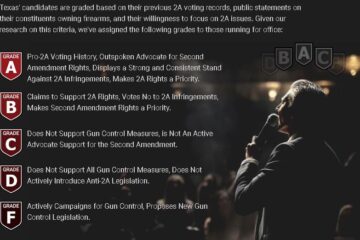Gun Skills – Tactics to Clear Houses
Returning home after a trip to the store, you see a strange vehicle in your driveway. As you get closer, you notice the front door is open. And then you hear your spouse scream for help. You wisely call 911, only to be told the response time will be delayed. You hear another scream from inside. You’re armed with your lawfully carried pistol, so what do you do?
I like to use this scenario when preparing students for the live-fire tactical simulations at Gunsite. Entering such a situation is very dangerous and should be an absolute last resort, but it’s worth practicing. Applying these guidelines helps my students be successful during the nerve-wracking but valuable experience of clearing a shoot house by themselves.
Visualize
To reduce stress and be successful, think it out and imagine how things might go down. How will you move? What do you expect to encounter? If you must shoot, will you use your sights and make fight-stopping hits?
- Activate Your Own Stem Cells & Reverse The Aging Process - Choose "Select & Save" OR Join, Brand Partner & Select Silver To Get Wholesale Prices
- Get your Vitamin B17 & Get 10% Off With Promo Code TIM
- How To Protect Yourself From 5G, EMF & RF Radiation
- Protect Your Income & Retirement Assets With Gold & Silver
- Grab This Bucket Of Heirloom Seeds & Get Free Shipping With Promo Code TIM
- Here’s A Way You Can Stockpile Food For The Future
- Stockpile Your Ammo & Save $15 On Your First Order
- Preparing Also Means Detoxifying – Here’s One Simple Way To Detoxify
Break It Down Into Manageable Pieces
How do you eat an elephant? One bite at a time, of course! Think of it like this: What’s my first problem and how do I solve it? The first might be going through a doorway, and the next might be moving down a hall. Take it a piece at a time to avoid being overwhelmed by the size of the problem.
Distance Is Your Friend
Maximize the distance from a threat. A threat is any place a person could be hiding or anything obstructing your view, like a corner or a piece of furniture. You don’t want to be in a toe-to-toe gunfight or to be physically grappling with an attacker, so move away from threat areas.
Corners And Openings
Commit slowly and slice your way around danger areas a little piece at a time. If you need to clear a corner to your right, move as far back as you can, then roll your shoulders to the right as you bend your right leg at the knee and slowly lean into the opening. Continue until you’ve cleared the corner. If there’s someone there, you’re going to see a piece of them before they get eyes on you. Now you have the advantage and can decide whether you want to retreat to a better position or to offer a challenge.
Never Pass Anything You Haven’t Personally Cleared
Search in a linear fashion and assume the nearest threat area is the one you must deal with first. Passing something like a closet while you’re concerned with a larger open area could be a fatal error.
Search from Low Ready
Assuming you believe you may face a deadly threat, search from low ready—that is, with two hands on the gun and the muzzle depressed. As you clear a corner, for example, bring the gun up to just below your line of sight and be prepared to shoot if necessary. It’s too tiring to stay pointed in and you can’t be pointing guns at people who don’t present deadly threats, so use low ready.
Also, beware of leading with the gun, as doing that gives you away and presents the possibility of a gun grab. When you approach a corner or a door jamb, depress the muzzle even further to avoid this.
Doors
Work doors from the knob side when possible to avoid reaching across the door. Think: Where do I want to be when the door opens? Avoid pointing the gun at your hand as you grasp the doorknob, pull or push the door open and then move back and away. Pause, listen and then begin pieing the opening from one wall to the other. See everything you can inside, then decide where to move next. Never hang out in a doorway; move through the opening quickly and step to the side.
Shooting
We only shoot at deadly threats if we must, but if you have to shoot, apply the basics of sights and trigger. Having taken thousands of students through shoot houses, I can tell you this: Those who look at the sights, control the trigger and follow through get hits—those who don’t, miss, even at very close indoor distances.
Conclusion
While you’re unlikely to face the kind of problem I presented at the beginning of this piece, I want you to think about and practice these tactics, then apply them to your daily life. Whether making entry, escaping with your family from a dangerous place or simply moving through life, being alert to potential danger, avoiding blind spots and making sure you’re in a “clear” environment are habits that lead to peace of mind.
Article by Ed Head














